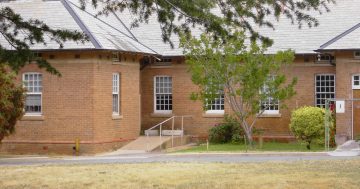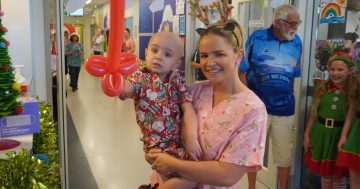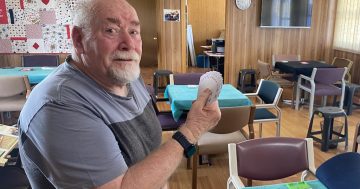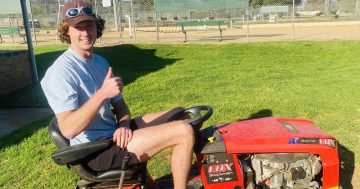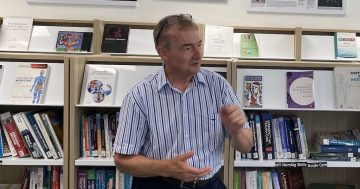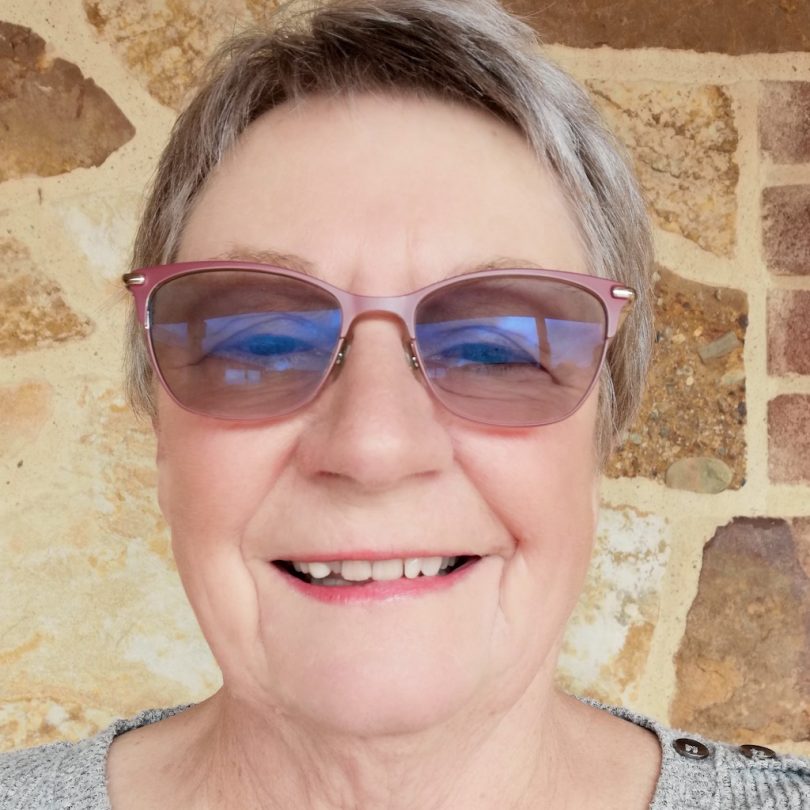
Sue Loader worked as a nurse at Goulburn Base Hospital for 45 years. Photo: Supplied.
Goulburn Base Hospital erupted into bedlam in the 1970s when horrific highway accidents overwhelmed doctors and nurses. Seventeen-year-old trainee nurses Sue Loader and Liz Taylor (nee Doughty) learned to deal with everything.
“We were young, fresh, thin and stupid,” says Liz, looking back on those days with a chuckle. “Well, naive.”
Ex-army nurses bullied and indoctrinated them into becoming unquestioning handmaidens. They stood with their hands behind their backs when a senior nurse came into the ward.
Later, as a night supervisor, Liz worked in accident-and-emergency during winter when everyone, including the cleaner, dropped what they were doing when truck and bus smashes left a trail of misery.
“We didn’t have helicopters; we just had our two surgeons and anaesthetist,” she says.
“If we had a big trauma come in we did that [dropped everything], plus the rest of the hospital – 135 beds with enrolled nurses running the wards and maybe one or two registered nurses.
“We learned a lot, I tell you.’’
No counselling was offered – just a cup of tea. And a caring Goulburn community that saw police coming off night shift joining the nurses, asking how they were over supper which included a cake shop’s offerings to help after “a bugger of a night”.
“I think that counteracted the stress,” says Liz.
Sue says, “The first patient I ever sponged died on me. She was expected to die, but as the first patient I can always remember having assisted the senior nurse sponge this poor little lady, and she died on me.”
The nurses, visitors and doctors on their rounds all smoked. Ashtrays overflowed on top of patients’ lockers. When Sue or Liz sat at their desks writing reports, they smoked.
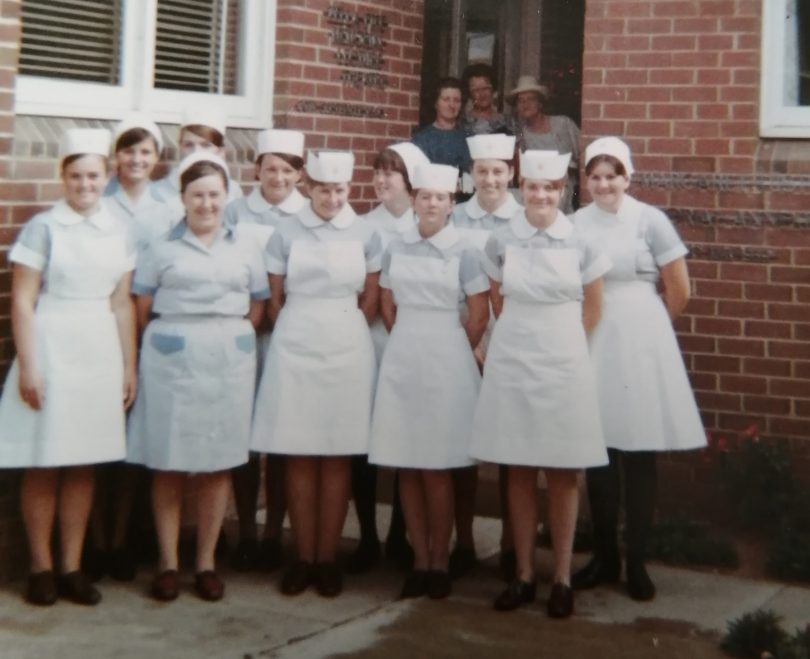
Sue Loader (centre, front row) and Liz Taylor (nee Doughty) (right, front row) with their fellow fresh-faced recruits to nursing in January, 1970. Photo: Supplied.
Training included three months at Kenmore Psychiatric Hospital and six months at Royal Prince Alfred’s specialist areas in Sydney.
When Liz finished training in 1973, she went to the Gold Coast for midwifery and then returned to Goulburn. Sue wanted to stay in intensive care after her training.
“But Matron Noakes said, ‘Sorry young fella, you are going to theatre,’ and I did about 15 years there,” says Sue. “Loved it, [but] a lot of hard work.”
Sue had a remarkable 45-year career as a theatre nurse and nurse unit manager. She and Trish Sykes took turns as the 24/7 on-call registered nurse.
Sue worked alongside distinguished Australian ophthalmologist Leo Shanahan on cataract surgery. She also had 13 years in the emergency department.
Drug addicts created a new, harder-edged enemy for nurses who were more accustomed to patching up drunks. Sue says drug addicts were nastier.
“I was attacked going home from work one night, had rocks thrown at me and my car tyres slashed,” she says.
Liz hated working on New Year’s Eve.
“That used to be the domestic violence night,” she says. “That was a different sort of drug problem, more alcohol-related.”
Despite the workload, nurses found ways to break rules and laugh.

Liz Taylor (nee Doughty) experienced the challenges of a busy accident-and-emergency department as a nurse at Goulburn Base Hospital. Photo: Supplied.
In those days, patients were in hospital for longer stays before and after surgery, unlike today.
“It gave us a little bit more time to play up,” says Sue.
Liz recounts two men in traction for an extended period who were left in tears laughing, almost breaking their strings with excitement, when the nurses jokingly told them a bed shortage in the women-only ward had forced a young female patient to share their men-only ward.
“I wheeled in this lady who was supposed to be a patient,” she laughs. “She got out in a black slip and went to get into bed and they were screaming and laughing. They knew who it was [it was another nurse in on the joke].”
Sue loved nursing, but not management which became too stressful. When Liz returned to maternity after an absence of 16 years, it felt like slipping on a comfortable pair of old shoes. She loved the mothers and babies, although some were less than grateful compared to mothers in the 1970s and 1980s.
Both women have a keen sense of humour and compassion when recalling those days and nights when people were at their most vulnerable.
Original Article published by John Thistleton on Riotact.







